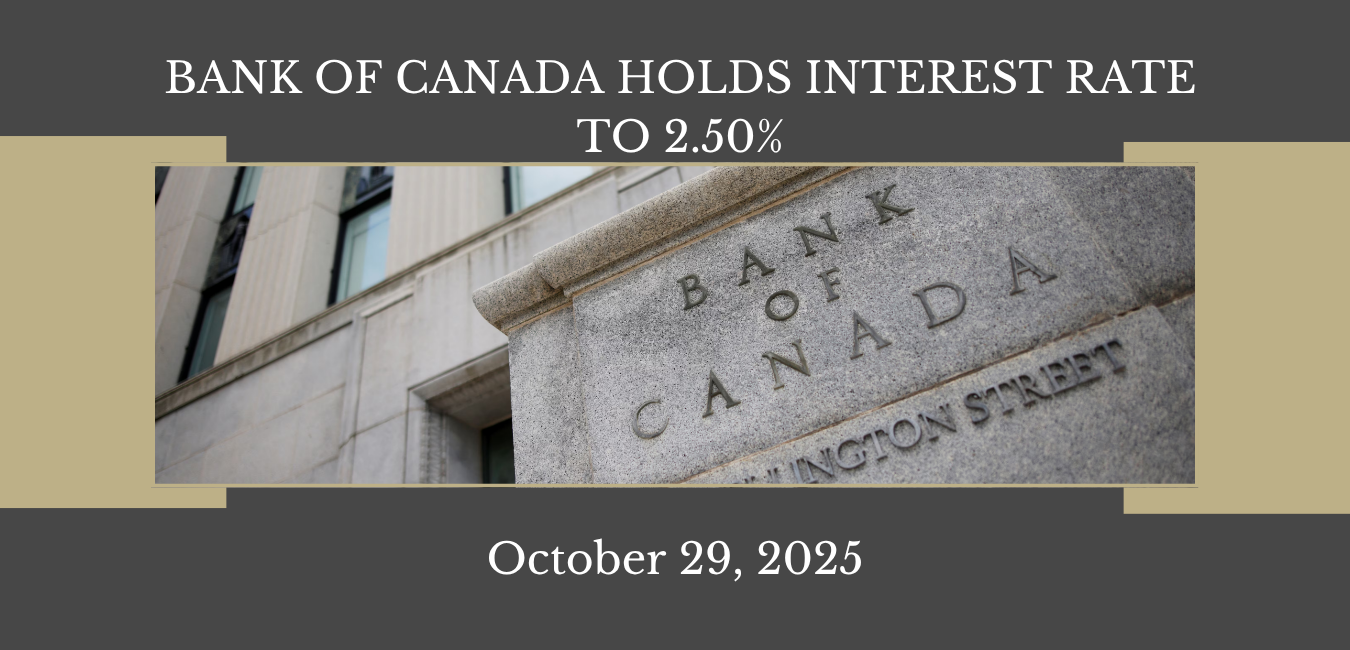The Bank of Canada today reduced its target for the overnight rate by 25 basis points to 2.5%, with the Bank Rate at 2.75% and the deposit rate at 2.45%.
Global economic growth, which had remained resilient to sharply higher U.S. tariffs and ongoing uncertainty, is now showing signs of slowing. In the United States, business investment remains strong, but consumers are cautious, and employment gains have slowed. U.S. inflation has increased recently as some tariff costs are passed on to consumer prices. Growth in the euro area has moderated due to the impact of U.S. tariffs on trade. In China, growth held up in the first half of the year but is softening as investment weakens. Global oil prices remain near levels assumed in the July Monetary Policy Report (MPR), while financial conditions have eased further with higher equity prices and lower bond yields. The Canadian dollar has remained stable against the U.S. dollar.
Domestically, Canada’s GDP declined by about 1½% in the second quarter, reflecting the weight of tariffs and trade uncertainty. Exports fell sharply by 27% in Q2 after first-quarter gains driven by pre-tariff orders. Business investment also declined, while consumption and housing activity grew at a healthy pace. Looking ahead, slow population growth and a softening labour market are expected to dampen household spending.
Employment has declined over the past two months since the July MPR, with losses concentrated in trade-sensitive sectors and hiring slowing elsewhere. The unemployment rate increased to 7.1% in August, while wage growth continues to ease.
CPI inflation was 1.9% in August, consistent with July, while inflation excluding taxes was 2.4%. Core inflation measures have remained around 3%, though recent monthly momentum has eased. Broader indicators, including alternative core measures, suggest underlying inflation is running near 2½%. The federal government’s removal of most retaliatory tariffs on U.S. imports is expected to reduce upward price pressure on these goods.
Given the weaker economy and reduced upside risk to inflation, the Governing Council deemed a reduction in the policy rate appropriate to balance risks. The Bank will monitor how trade shifts affect exports, business investment, employment, household spending, and inflation expectations.
The Bank reaffirmed its commitment to price stability and economic growth, stating it will continue to support Canadians “through this period of global upheaval” while keeping inflation well controlled.


.png)
